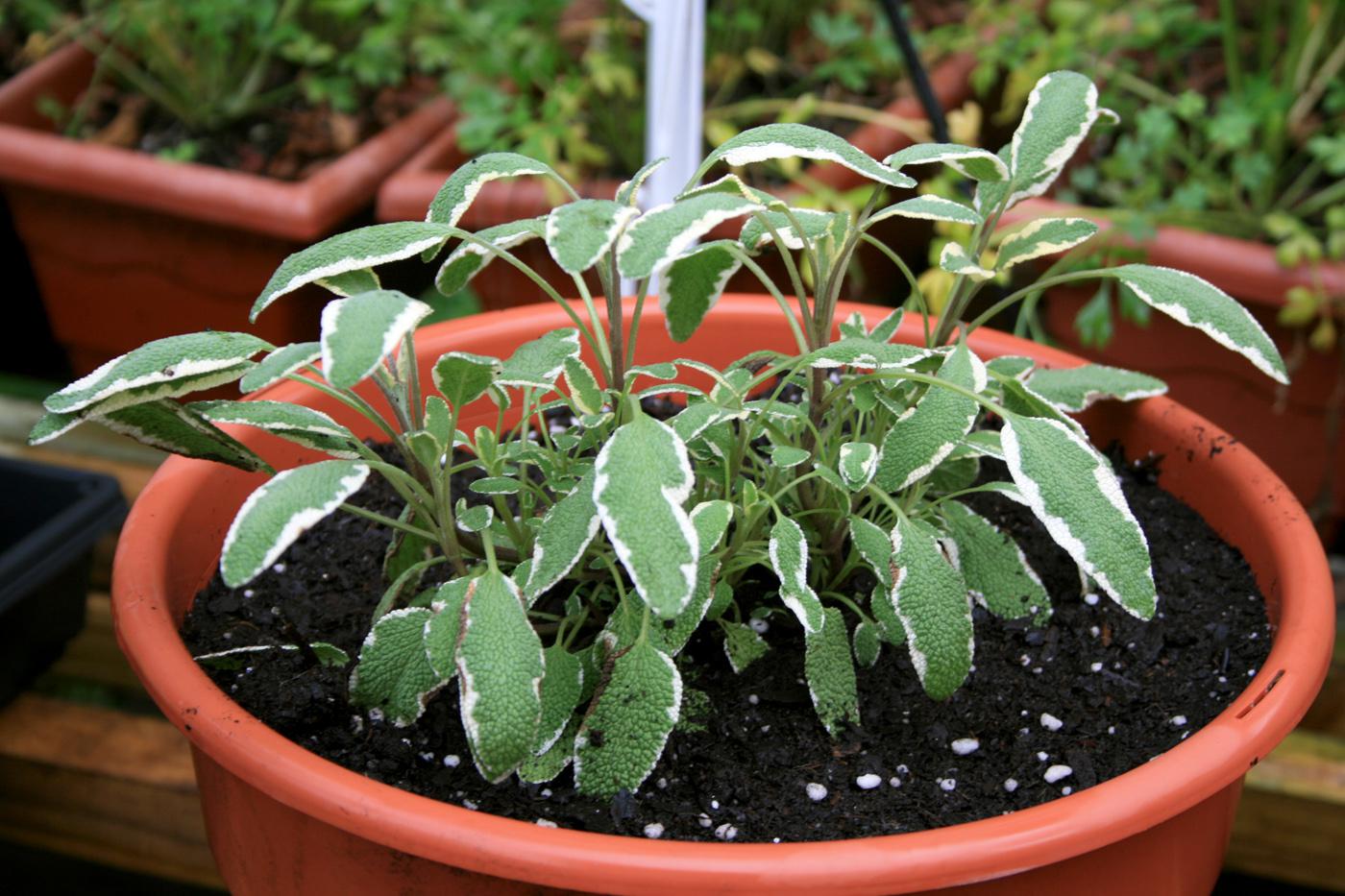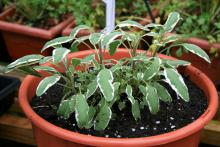Information Possibly Outdated
The information presented on this page was originally released on September 9, 2010. It may not be outdated, but please search our site for more current information. If you plan to quote or reference this information in a publication, please check with the Extension specialist or author before proceeding.
Garden-fresh herbs add flavor and color
It may be early September, but now is a good time to start thinking about growing fresh herbs to harvest during the winter months.
Fresh herbs are relatively easy to grow in containers. In addition to offering a feast for the palate, herbs can offer a feast for the eyes. Many of the basic herb species are available in variegated or multicolored foliage. The multicolored ones work well in recipes, but they also make flavorful garnishes.
Common sage, Salvia officinalis, has a couple of attractive selections. Icertina has green leaves that are variegated with a steely grayish purple. A favorite of mine is the Tricolor selection, with its green leaves and white margins. Tricolor looks gorgeous in a container with pink or purple.
It seems that basil is one of the most popular herbs with gardeners, but it also requires the most attention when temperatures start to dip. The Mississippi Medallion winner Purple Ruffles is an outstanding plant, with fragrant, deep purple leaves and curly margins.
A newer purple basil I plan to grow this fall is the Amethyst selection. It has thick, turned-down leaves, like the classic Genovese basil. In fact, this is the first purple basil in its category. The almost-black leaves of this basil make it a real stunner. A friend of mine used Amethyst to make purple basil mojitos, and the color extracted from the leaves was fantastic. Purple basil can also add a new twist to a classic pesto recipe.
Many of these colorful herbs are available at your favorite garden center, and many more can be ordered from catalogs.
It is not too late to start a new herb garden from seed. Use a high-quality, peat-based potting mix. Fertilize with a controlled-release fertilizer, using 2 to 3 tablespoons per plant blended into or top dressed on the mix. Be sure to water well each day when first planted. As the temperatures cool down later this fall, the frequency of watering can be reduced, but never let your herb containers dry out completely.
Growing fall herbs in containers is less overwhelming than a full garden and requires less weeding.
You may be surprised by how many herb containers will fit in a tight space. Even if you have only a small patio, balcony or sunny kitchen window, you can still enjoy fresh herbs all fall and winter. The small containers are easy to transport indoors on cold nights. To add more visual interest, use containers of different colors. Oranges, reds and blues can add great color contrasts for container herbs.
Place your herb containers in an easily accessible spot so you can enjoy fresh herb goodness whenever the recipe calls for it.








